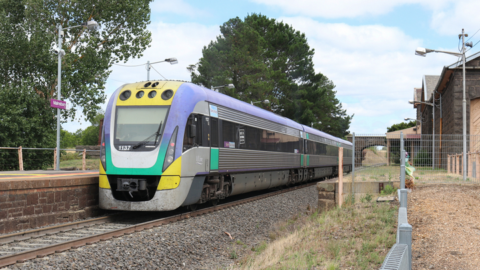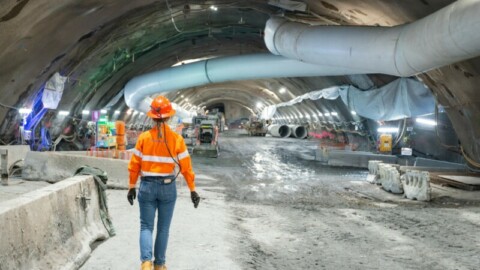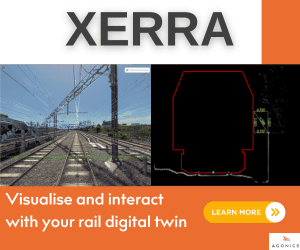Our transport sector exists in a vast, ever-increasing sea of data and advanced technologies. The opportunity – and challenge – is how to harness the power of big data and digital tech to optimise the customer experience and shape the future.
Any agency or business involved in designing, delivering or operating major infrastructure that isn’t already at a high degree of sophistication in its use of data analytics, modelling and advanced digital technologies is falling behind. There’s a massive opportunity here to optimise operations and maintenance, prioritise spending across the portfolio, build greater resilience to future shocks or stresses – and, critically, to shape the customer experience.
New data sets, technology and analytical techniques are allowing governments and businesses to reimagine how they deliver services to customers. The evolution of data-driven customer-centricity has enabled better experiences for customers in many parts of the transport sector, but there is still potential to achieve much more.
Understanding customers
To get the best results from new transport infrastructure, what we measure must be driven by the organisation’s strategic intent and an understanding of what customers value. For example, if a customer priority is for services to arrive on time, the metric should shift from an operational focus such as ‘on-time running’ to a more customer-centric metric, such as ‘lost customer minutes’. Clarity around metrics will avoid wasted time and effort and ensure alignment of data collection and analysis, KPIs and strategy.
Knowing customers on a more individual level will better inform strategies and policy and enhance the design of products and services. Already, transport networks have a great degree of customer data gathered through electronic ticketing systems, and many customers are already able to receive personalised information in real time; however, these tend to be ‘push’ systems based on pre-set needs and information rather than fully dynamic systems.
Genuine fully dynamic systems can deliver real-time personalised information to customers to enrich the customer experience, especially during periods of network disruption. They can also help operators use ‘behavioural nudges’ to manage the network more smoothly.
For example, during a disruption on the network, customers can be provided with personalised information to inform their ‘next best action’ based on the needs and travel preferences they’ve shared. Operators can also incentivise customers to change their intended travel time. But nudges can also be used to encourage longer term changes to customers’ usual patterns of travel, achieving better customer experiences as well as a more efficient network. This could be particularly useful as the network and commuters adjust to new ‘COVID-normal’ working arrangements.
Bartering data and embracing uncertainty
To really understand customer behaviour, achieve full dynamic personalisation and establish meaningful feedback loops, there needs to be a ‘barter’ of data. Customers will need to share their data to access better services and experiences – but this requires a strong foundation of trust that their data will be appropriately managed, with the right technology and systems in place for governance, privacy, cybersecurity and data sharing. Customers will also need to perceive the value and benefit that sharing their data will deliver them, or they will not engage, and push-based personalisation will be as good as it gets.
For customers to get the information they need within an actionable timeframe, real-time information needs to be supplemented with predictive information. Even with the most powerful machine learning techniques, there will still be some uncertainty in the data. It’s important that this is communicated both to customers and other stakeholders, so that there’s a shared understanding of the limitations of prediction. Learning to live with some uncertainty in the data will take a shift in culture that allows confidence and trust in the platform to grow.
Improving productivity, efficiency and effectiveness with digital twins
Data and digital technology have revolutionised asset management in the transport sector – including the implementation of IoT sensors, BIM, simulation and optimisation models culminating into a digital twin capability.
A digital twin is a virtual representation of the real world that pulls an enormous amount of information together to enable users to understand the history and current state of the network and to explore the ‘what if’ questions that will shape the network’s future. The range of digital twin technologies and systems is vast (even extending beyond assets and networks to include customers and workforces), and adoption must be driven by the critical questions and problems that the user needs to solve.
Digital twins have much to offer the transport sector and have been used very successfully in scheduling, maintenance, identification of hot spots and testing of recovery strategies. But to realise the full value of these tools, there will need to be a change management process to integrate the tools into decision-making processes and workflows in a way that allows rapid identification of solutions – and engenders the trust necessary to enact them. The workforce should be brought along on the journey of designing the digital twin, identifying who will use it and how, and mapping its integration into work flows, so that they understand it, trust it and will advocate for it.
Using data analytics for operational readiness
An operational readiness project for a new piece of major transport infrastructure is extremely complex and the data flow is enormous. An analytical platform is needed to consume this data and make sense of all the aspects, interplays and derived dependencies – such as network interactions and intersections, customer flows, timetabling, pressure points and disruption. As data is accumulated and interrogated over time, the platform will become even more valuable.
What’s needed is to use data in a way that is more sophisticated, broader and more detailed than before. The operational focus should broaden to understand the impact of any new infrastructure in the context of the overall network, its impact and interaction with different modes and other infrastructure assets – and its effect on the customer experience.
Data is created in ever-increasing volumes throughout the life of new transport infrastructure projects. Effectively converting this into insights that can be understood and practically used to create organisational value will be the key to shaping a better transport future. The continual evolution in digital and data-led customer-centricity is limited only by trust and imagination.
This article is part of PwC Australia’s series “Getting Transport Projects Purpose Ready”. Other articles in the series take a closer look at how to safeguard success through customer-centric design, community and stakeholder engagement, project assurance, and asset management.
About the authors
Alastair Pearson is an Integrated Infrastructure Partner based in Sydney and the National Data & Analytics Lead in PwC’s Integrated Infrastructure team. He is focused on transforming the broad world of infrastructure and transport with the power of data, analytics and innovation. Alastair is also an Industry Professor at UTS in the Data Science Institute within the Faculty of Engineering and Information Technology.
Martin van Holten is a Director, Data & Analytics in PwC Australia’s Integrated Infrastructure team based in Sydney. Martin leads PwC’s Digital Twin practice and has worked extensively with our transport sector clients to help them gain customer-centric insights into their networks.
This sponsored editorial is brought to you by PWC Australia. For more information, visit the PWC website here.

















